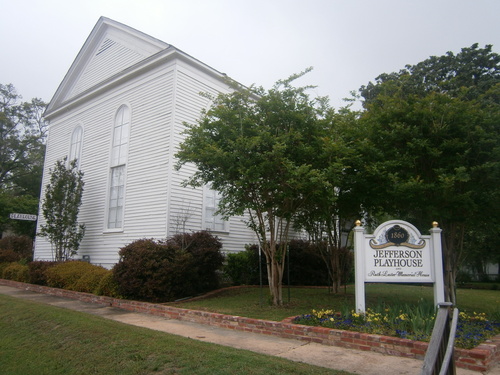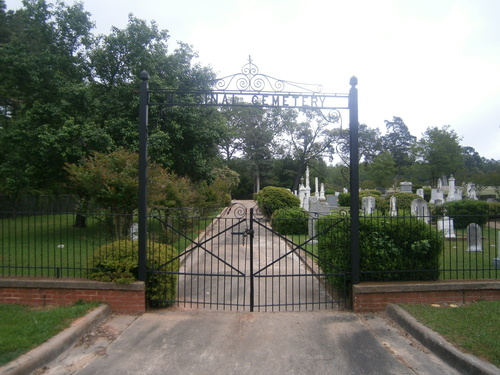.jpg) Jefferson's Jewish Heritage
Jefferson's Jewish Heritage
- By Jeff Campbell
In 1851 Louis Goldberg left Koenigsberg, Germany to start a new life in a new country. Mr. Goldberg, like many of the Jewish faith, abandoned Europe in the 1800's due to political unrest, religious persecution and economic strife. Many of these Jewish immigrants found themselves in the Lone Star State settling in Galveston, Houston and San Antonio. Louis Goldberg did not settle in any of these cities instead he made his way to the inland Port of Jefferson, Texas.
Today Jefferson, Texas is a small, remote town in far, east Texas situated on Big Cypress Bayou. In the 1800's Jefferson was a steamboat boom town and trading partner with the city of New Orleans. During these boom years between 1845 to 1872 Jefferson was the sixth largest city in Texas and the second largest Texas port city after Galveston. The steamboats transported Texas cotton and other goods to the Crescent City and they returned with the hopes and dreams of pioneering settlers. Many of these Texas pioneers, like Mr. Goldberg, were Jewish. Mr. Goldberg opened a mercantile and became one of the most prominent members of Jefferson's Jewish community.
The Goldberg family lived the American dream in Jefferson. Louis Goldberg's son Isaiah was born in Jefferson in 1876. Isaiah would graduate from the Agricultural & Mechanical College of Texas in 1896 with a Bachelors Degree in Horticulture. Isaiah was a Lieutenant in the Corps of Cadets of the Agricultural & Mechanical College of Texas. Louis would go on to serve as Mayor of Jefferson in 1920 and 1921.
Louis Goldberg's daughter, Jeanette Miriam would attend both Vassar and Rutgers Colleges. She would go on to achieve world wide fame in the Jewish community, serving as Secretary of the Jewish Chautauqua Society. Jeanette Miriam died in Philadelphia in 1935. Like many Jewish Jeffersonians, Jeanette Miriam left Jefferson when the city entered into an economic decline.
There were two huge factors that caused Jefferson's economic decline. The first was the destruction of the "Great Raft". The Great Raft was a 150 mile long natural log jam on the Red River. This log jam kept the waters of Caddo Lake and Big Cypress Bayou deep enough for Steamboat navigation. When the log jam was destroyed the water levels fell and steamboats could no longer make their way to Jefferson. The second factor was the expansion of America's railroads. The railroad bypassed Jefferson, instead it went through Marshall 15 miles to the south. Jefferson would no longer be an economic transportation center.
Although many of Jefferson's residents began to leave some like Louis Goldberg and his son Isaiah would choose to say. Louis Goldberg would die in Jefferson in 1899. His son Mayor Isaiah Goldberg would pass away in Jefferson in 1923. They are both buried in Jefferson's Mt. Sinai Cemetery.
Today visitors can stroll through the beautiful Mt. Sinai cemetery where many members of Jefferson's Jewish Community are buried. The cemetery is just one of the historical, physical reminders of Jefferson's Jewish Heritage.'
The Jefferson Playhouse was originally the Hebrew Sinai Synagogue. The Synagogue was given to the Jessie Allen Wise Garden Club in exchange for the Garden Club's perpetual care of Mt. Sinai Cemetery. Another landmark is the statuesque Sterne Fountain that stands in the middle of the intersection of Lafayette and North Market Streets. The fountain was a gift from the Sterne Family. The Sternes were another prominent Jefferson Jewish Family that managed the Jefferson Post Office and engaged in many civic and volunteer causes. Walking down South Line and Houston Streets one can observe the historic homes of Jefferson's Jewish residents, this area was the city's original Jewish neighborhood. Although there is not a Jewish Community in Jefferson today, their presence and their role in building Jefferson is ever present.
_rdax_375x500.JPG)


_rdax_375x500.JPG)